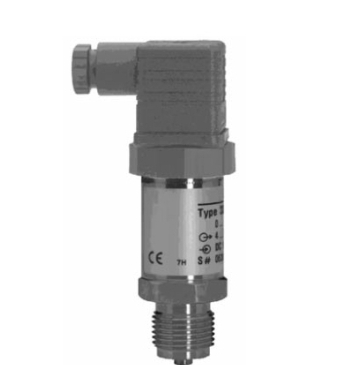 Micro-pressure sensor in the process of measuring the pressure directly on the diaphragm of the sensor, and then through a series of changes, the formation of the pressure of the standard signal to measure the process is the measurement of the micro-pressure sensor.
Micro-pressure sensor in the process of measuring the pressure directly on the diaphragm of the sensor, and then through a series of changes, the formation of the pressure of the standard signal to measure the process is the measurement of the micro-pressure sensor. For micro-pressure sensors, sensitivity and linearity are the two most important performance indicators for micro-pressure sensors. In order to produce a sensor that can meet practical application requirements, it is necessary to explore an effective simulation method for the sensitivity and linearity of a micro pressure sensor. In the actual research, a finite element analysis (FEA) and path integral simulation method based on the surface stress of a piezoresistive pressure sensor film was found. Through this method, the accurate estimation of the voltage output value of the sensor under different pressure values ​​in the full scale range is achieved. Based on this, the sensitivity and linearity of the pressure sensor are effectively simulated.
Rapid development of micro-pressure sensors, a new type of sensor developed using a piezoelectric single-chip structure, and built-in preamplifier, through the amplifier to amplify the weak signal and achieve impedance conversion, so that the sensor has a small range, high sensitivity, good anti-interference Features. Such sensors have been widely used for the detection of small signals such as pulse and wall pressure fluctuations. However, at the same time, for the technical challenge of the accuracy test of the micro-pressure sensor, there is an urgent need for a simple measuring device to measure the performance of this type of sensor.
According to the principle of mechanics, there is a stress concentration effect in the corner region. After the silicon film is pressed on the front or back surface, the corner region will have the extreme value of the stress, so the crack first occurs from there. After introducing the stress dispersion structure, the corner region is turned into a fillet region with a certain curvature, so that the stress extreme value of the region is reduced. At the interface between the silicon film and the frame or the dorsal island, a gradual structure with a certain semi-curvature curvature is formed, which cannot be achieved by the conventional conventional anisotropic wet etching. For this purpose, a mask-maskless anisotropic wet etching technique is used.
HIGH SPEED ASSEMBLY WINDER
Features:
Single side drive ,speed control by frequency conversion ,easier for winding speed and technique parameter adjustment;
Tension device ,easy to adjust yarn tension by changing tension slices;
Bobbin forming ,stable and reliable ,applying for any style;
Applied electrical broken end testing and electrical moving-on –length device ,the machine could protect the mixture of single and double yarns ,
the machine alsokept the yarn length ,so the products quality was improved ;
Advantages of the machine :compact and clear yarn guide construction ,flexible machine table height ,high working speed ,low power consumption ,low noise .
Applied Yarns
Merges cotton ,polyester chemical ,fiber and blended yarns ply ,makes different types material spindle of two or three strands to parallel bobbins Two-For-One Twister using
Assembly Winder Machine,Double Winder,Soft Winder,Hard Winder
ZHEJIANG KAICHENG TEXTILE MACHINERY CO.,LTD , http://www.kaichengtex.com
![<?echo $_SERVER['SERVER_NAME'];?>](/template/twentyseventeen/skin/images/header.jpg)